Main Menu
Latest Blog Entry
User login
How to get stronger in pre-season
Why do I need to start pre-season strength training?
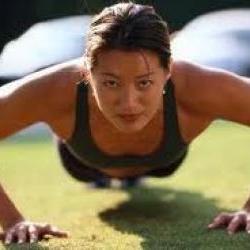 Well, ideally you won’t be starting from scratch. Hopefully, you have been doing your foundation work throughout the off-season.
Well, ideally you won’t be starting from scratch. Hopefully, you have been doing your foundation work throughout the off-season.
This means that you are moving efficiently and can control your body through a full range of motion.
Now, as we saw last week, we are looking to make you more robust. This will allow you to do those movements Faster, Further or with Resistance.
Strength training will make you more resistant to injury too. This is true of all sports, and if you are a junior player or female, you might think “strength training isn’t for me”.
But females are 4-7 times more likely to get Knee injuries than males so strength training is an essential part of helping prevent ACL injuries (See Free ebook on S&C for females here).
If you are able to move Faster, and Further and against Resistance (gravity, another person) and you are less likely to be injured, you will be a better player.
Getting stronger does not necessarily mean getting bigger (if you want to get bigger for Rugby, then see here).
Key message: Strength training is essential for all athletes. The type of strength training differs depending on age/stage and sport.
What exercises should I be doing?
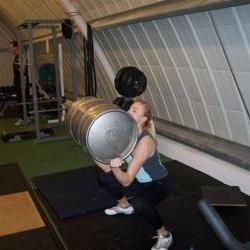 This very much depends on your age, stage of development and the sport you play. But certain principles are important:
This very much depends on your age, stage of development and the sport you play. But certain principles are important:
- Work the whole body, not just isolated parts.
The body is a very complicated system, it is not a series of individual actions or jigsaw pieces.
Your strength programme should reflect this. Exercises like squats, jumps and pull-ups use lots of different movements together.
If you are sitting or lying down doing exercises, you are not using your whole body. The bench is good for doing step-ups, not for doing 80% of your exercises! You can sit on it between doing proper work.
- Start in the middle and work out.
A weak trunk means that anytime you try to generate power in the upper body, or hold a position like a tackle, or keep your body upright when running, you will struggle.
The trunk must be trained in 3 planes, and with slow, fast and stabilising actions. This medicine ball sequence is an example of how to get your ‘core’ stronger in a relevant way to sport
If you are making your athletes hold a plank for more than 2 minutes then you are wasting their time and yours.
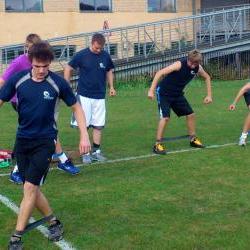 Progress according to individual pace
Progress according to individual pace
Not every athlete will be good at every exercise. They will move faster along the progression with some exercises, and slower at others. Recognise this and adapt your programme accordingly.
For example, if some of your team are having trouble with squats, they could do Goblet squats, the intermediate group could do overhead squats, the advanced group could do squat jumps.
Mini bands are a good tool to help balance and control.
- Combine big movements with single leg/single arm work.
It is tempting to just work on big lifts because you can test and measure them. But you need to make sure that any strength gain is applicable to the field/court, or is helping to prevent injury.
You could do a sequence of Dumbbell squats (2 legs), single-leg squats, Dumbbell Rotational Press (2 arms), lawnmowers (single arm with rotation). If you followed this with a bear crawl into a sprint, then your body is learning to apply its newfound strength.
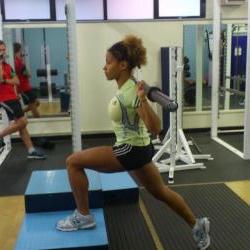 Overload is not just adding weight.
Overload is not just adding weight.
Overload can be Spatial, Temporal or Resistive (more detail here). The answer is more than just “add more weight” or “you need to be able to squat twice your body weight”! It depends on your sport and your position.
E.g. A rugby union winger might need to work on running around people, so she works on temporal and spatial overload. A tight head prop has to work on absolute strength so resistive overload is needed.
- Everything works, but nothing works forever.
It doesn’t matter how good your plan is, if you are doing the same exercises, in the same sequence in 4 weeks time, it won’t be as effective. Not only will your body have adapted, but your team will be bored stiff! (This is one of Dan John’s philosophies.)
Try doing a series of 14- day or 21-day cycles that allow progressions and variety to be built in, whilst giving the body sufficient time and stimuli to cause adaptation.
Get your Free pdf “Start Getting Strong in Pre-Season” with 5 Training Session Plans here
What about strength testing?
If you have read the above and have a good idea of what type of strength training your team will be doing, then it is relatively easy to test strength.
Do not test your team with exercises they have never seen or done before.
They will either: get a bad result which is irrelevant due to the learning effect or; worse still, get injured in the process.
If you are working with junior/ developmental athletes the worst reason to use a test is “because the first team do it”.
Time is precious, and testing lots of athletes takes a long time. I always prefer testing in the sessions, rather than having a “testing day“. That way the athletes are warmed up and I record what they are doing as part of their session.
You don’t have to do all the tests at the same time.
 Example tests (not Gospel, remember the points above)
Example tests (not Gospel, remember the points above)
Standing broad jump (yes, I know you might call this power but it measures spatial ability) 2 leg or 1 leg.
Pull-ups: Overhand, with extra weight if needed, or inverted rows for those who can’t do 1.
Squat: number of body weight for juniors, a loaded variant (back, front, overhead) for experienced lifters.
A push: hindu press ups, or behind head press are currently my favourites. Bench press is just not applicable, military press can lead to convoluted body positions to get good score.
Side leg lifts: Get into a press up position, lift one hand off the floor and point to the ceiling, move that side’s foot onto the other one. Your body is now in a straight line perpendicular to the floor, resting on one outstretched arm. Lift the top leg up to head height and down again. Target is 25 on each side.
This seems to quickly identify those with poor single leg balance and control.
Throw: A medicine ball or a heavy implement, either chest pass or overhead, but check how much of the body is being used. Whole-body is fine if that is what you are trying to measure.
5RM, 3RM or 1RM? I wouldn’t do 1RM tests at the beginning of pre-season, it is a good way of getting people hurt: they also can’t walk for 3 days afterwards! I prefer doing a 5RM as part of a session, or a max number in a minute for beginners.
Choose a test that matches your programme, rather than design a programme to match your test!
Next week we will be looking at pre-season agility training, using your new-found strength and control.
See our Get Stronger programme here
Client Testimonials
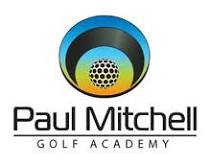 Paul Mitchell Golf Academy
Paul Mitchell Golf Academy
With twenty plus years golf coaching experience working with all levels of golfer, I have sought after specific physical training for my more elite players. In this quest, I have worked alongside trainers who have worked with the very best golfers in the world. I can hand on heart say that James is the […]
More


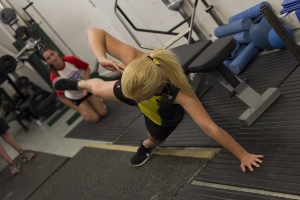
Comments
[…] underpins all athletic movement: posture, stability, power, balance and pure strength all require a strength training plan of some […]
[…] Body Control. This is the foundation where the importance of strength and balance are emphasised. This allows better force reduction, force stabilisation and then force […]
[…] hopefully have read and followed our guides and built a good foundation, got the strength that you can apply, and become more agile. Now is the time to get […]